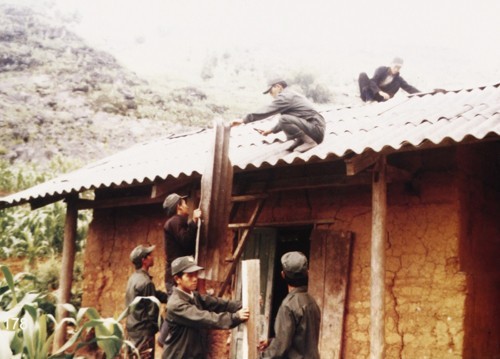(VOVWORLD) - The Ngai group has about 1,200 people living in 27 cities and provinces, but mostly in the northern province of Thai Nguyen. The Ngai are called by many names Khach Gia, He, Ngai Hac Ca, and Ngai Lau Man. They call themselves San Ngai, which means mountain people. The name indicates their original habitat and asserts their role in land reclamation and settlement of mountain hamlets.
 The Ngai build a straw clay house. (baotangdantoc.vn) The Ngai build a straw clay house. (baotangdantoc.vn) |
To adapt to a mountain climate and living conditions, the Ngai built their houses with straw clay walls to withstand the winter cold, keep the interior cool in summer, and protect them from intruders and wild beasts.
The Ngai cluster in hamlets on a mountain side close to a river or brook to irrigate their farms. A traditional Ngai house has 3 compartments and 2 lean-tos. The 3 compartments are reserved for sleeping, receiving guests, and worshipping ancestors. The walls are a compressed mixture of straw and clay.
Tham Dich Tho, a Ngai man, says, “We plant wood moulds on the ground and pack straw clay in them. The moulds are about 40 cm high. We compress one layer and then elevate the moulds, building the wall up to an average height of 2.5 m. Finally, we make the house’s beams and roof.”
In the past, when a family built a house, other villagers came to help. It used to be a community project with everyone lending a helping hand to finish the house in about 10 days.
“Rich people roofed their house with palm leaves, which could last 3 or 4 years. Others used sugarcane leaves or straw, which must be replaced every year and a half,” Tho said.
The main compartments, kitchens, and cattle and poultry barns of a traditional Ngai house are connected to create a square yard in the center, which has one main gate and two small windows.
Now, almost all Ngai families build houses similar to those of the Kinh.
The Vietnam National Village for Ethnic Culture and Tourism is working on a project to preserve the traditional Ngai house.